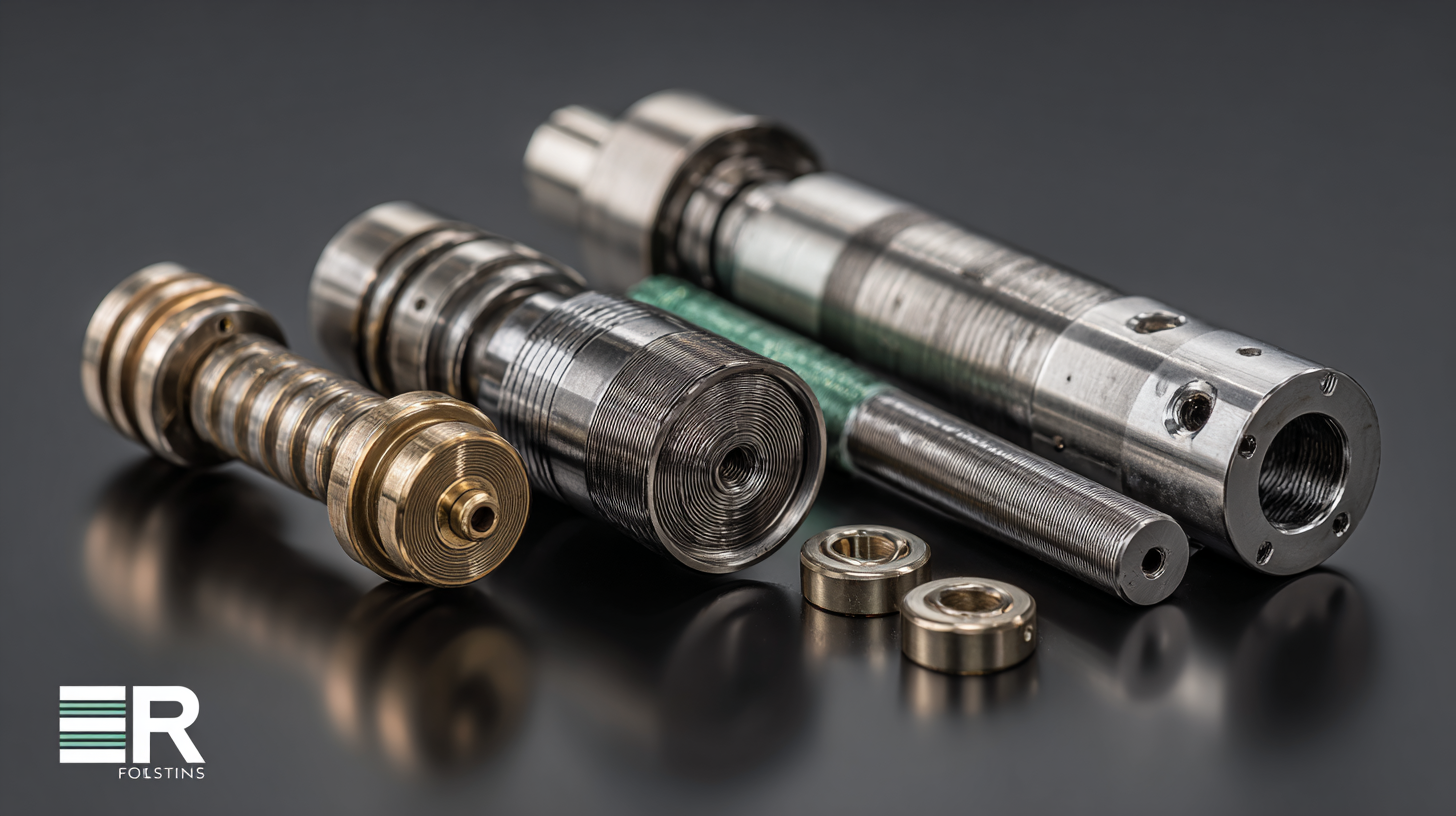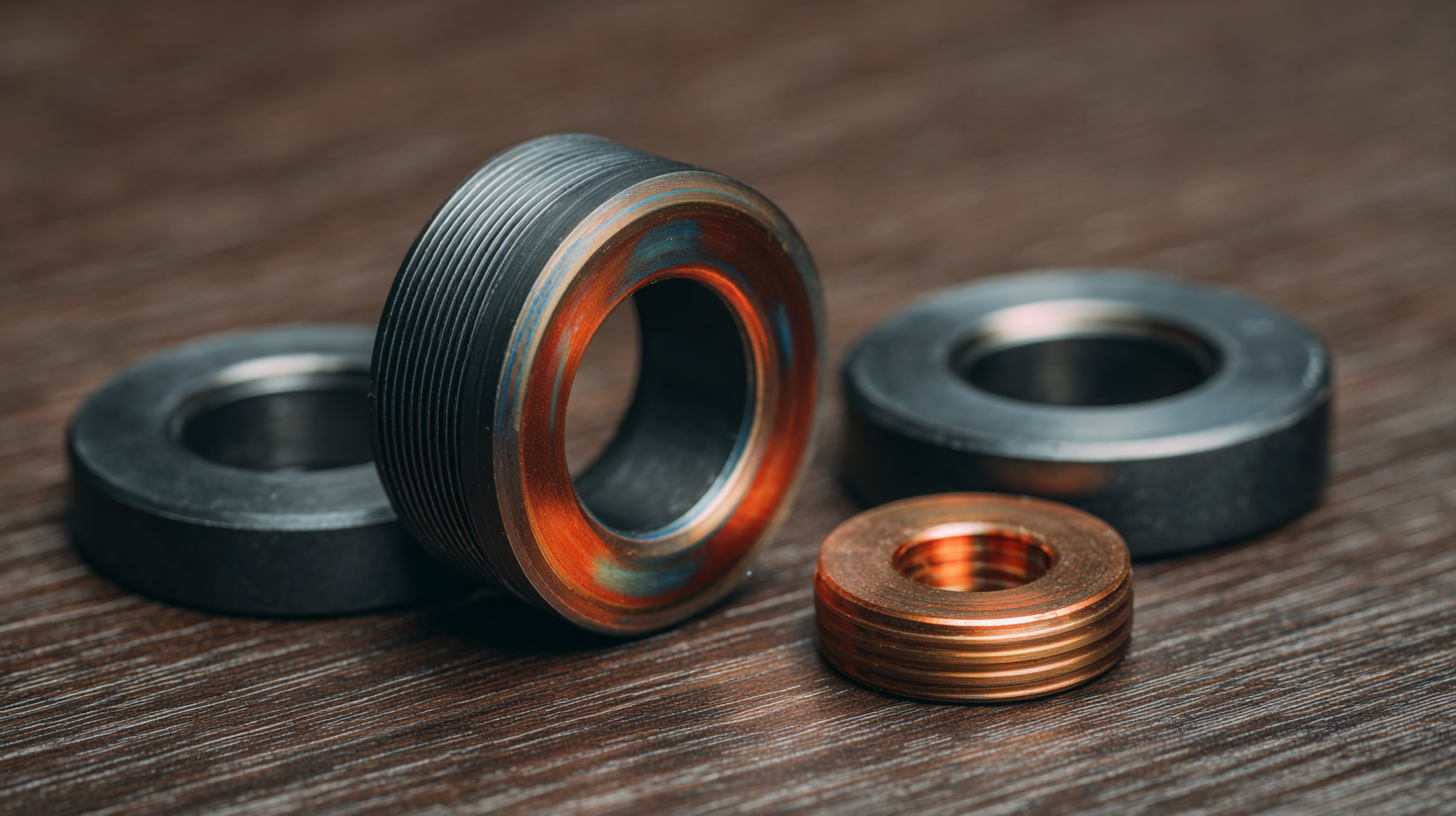
Innovative Solutions for the Future: Exploring 2025's Best Thread Rolling Dies Trends
As manufacturing technology continues to evolve, the demand for precision components, such as Thread Rolling Dies, has soared. According to a report by MarketsandMarkets, the global market for threaded products is projected to reach $XX billion by 2025, driven by advancements in industrial applications and a focus on enhanced durability and efficiency. Thread Rolling Dies are critical in producing high-quality threaded fasteners with improved tensile strength and surface finish, catering to the automotive, aerospace, and construction industries. This blog will explore the innovative solutions shaping the landscape of Thread Rolling Dies, highlighting the latest trends and technological advancements that are set to revolutionize the industry by 2025. From detailed technical specifications to practical applications, our insights will equip readers with the necessary tools to stay at the forefront of this dynamic field.

Emerging Technologies in Thread Rolling Die Manufacturing for Enhanced Efficiency
As the manufacturing landscape evolves, the thread rolling die industry is witnessing an influx of innovative technologies aimed at enhancing efficiency. A recent report by MarketsandMarkets projects that the global die manufacturing market will reach USD 8.12 billion by 2025, driven primarily by advancements in automation and precision engineering. These emerging technologies are not just a trend but a necessity as manufacturers seek to reduce production costs while improving product quality.
One notable innovation is the integration of artificial intelligence (AI) and machine learning into the design process of thread rolling dies. These technologies allow for predictive analytics that can forecast wear patterns and optimize operational parameters, ultimately extending the lifespan of dies by approximately 20% according to recent studies by SME. Furthermore, the implementation of 3D printing has revolutionized prototyping and production. A study from Wohlers Associates highlights that 3D printing can reduce lead times by 50%, enabling manufacturers to quickly adapt to market changes and customer requirements. As the industry continues to embrace these technological advancements, the future of thread rolling die manufacturing looks promising, reflecting a shift towards smarter and more efficient operations.
Innovative Solutions for the Future: Thread Rolling Die Trends in 2025
Sustainable Materials: A Key Trend in Thread Rolling Dies for 2025
As we look toward 2025, the thread rolling dies industry is undergoing a significant transformation, with sustainable materials emerging as a pivotal trend. According to a recent report by Grand View Research, the global sustainable materials market is projected to reach USD 150 billion by 2025, growing at a CAGR of 10.5%. This shift is largely driven by increasing environmental awareness and regulatory pressures, compelling manufacturers to adopt eco-friendly practices. Thread rolling die suppliers are responding by integrating materials such as recycled metals and bio-based plastics, which not only reduce the carbon footprint but also enhance product performance.

Incorporating sustainable materials in thread rolling dies can also lead to improved operational efficiency. Data from the International Journal of Advanced Manufacturing Technology indicates that using these innovative materials can reduce waste by up to 30%, significantly lowering production costs. Companies are now investing in research and development to create biodegradable coatings and high-strength alloys that provide better wear resistance while maintaining their commitment to sustainability. As the industry moves forward, those that prioritize sustainable practices are likely to gain a competitive edge in an increasingly eco-conscious market.
Impact of Automation on Thread Rolling Die Design and Production Processes
The advent of automation is revolutionizing the design and production processes of thread rolling dies. As manufacturing industries strive for increased efficiency and precision, automated systems are playing a pivotal role. These technologies not only streamline operations but also enable higher levels of accuracy in die design, ultimately resulting in superior end products. Automation reduces human error, enhances consistency, and optimizes the use of materials, which is crucial in an industry where precision is paramount.
Moreover, the integration of advanced software and machine learning algorithms in thread rolling die design allows for real-time adjustments and predictive maintenance. This capability means that manufacturers can proactively identify potential issues before they lead to costly downtime. As we look toward 2025, the synergy between automation and thread rolling die production will likely set new standards for quality and performance, leading to innovative solutions in various applications, from automotive to aerospace. Embracing these trends will be essential for businesses aiming to remain competitive in a rapidly evolving market.
Market Projections: The Growing Demand for Precision Thread Rolling Dies by 2025
The demand for precision thread rolling dies is expected to surge by 2025, driven by the rapid advancements in manufacturing technologies and the increasing emphasis on efficiency in production processes. Industries such as automotive, aerospace, and electronics are leaning towards thread rolling as a preferred method for creating high-precision threads. This rise in demand is partly attributed to the ability of thread rolling dies to produce more durable and stronger threads compared to traditional machining methods, leading to enhanced product performance and reliability.
As companies prioritize quality and cost-effectiveness, the evolution of thread rolling dies will likely see innovative materials and designs that cater to specific industry requirements. Manufacturers are investing in research and development to create customizable thread rolling dies that can accommodate various thread sizes and geometries. This adaptability not only meets current market needs but also prepares businesses for future challenges, highlighting the importance of precision in design and production in a competitive landscape. The integration of smart technologies, such as IoT and automation, is poised to further transform the thread rolling industry, ensuring that precision remains at the forefront of manufacturing advancements.

Innovative Applications of Thread Rolling Dies in Diverse Industries and Their Future Outlook
In the fast-evolving manufacturing landscape, thread rolling dies have emerged as a pivotal solution across diverse industries. These tools, known for their ability to enhance material strength and precision in fastener production, are increasingly being leveraged in sectors such as aerospace, automotive, and consumer goods. The innovative applications of thread rolling dies go beyond conventional uses; for instance, advancements in die design are enabling the production of complex geometric shapes that cater to specific engineering requirements, ultimately driving efficiency and reducing waste.
As we look toward 2025, the future outlook for thread rolling dies aims to capitalize on cutting-edge technologies like automation and AI. These innovations promise to streamline operations further, allowing manufacturers to achieve higher throughput while maintaining superior quality. Additionally, the integration of smart manufacturing practices is likely to enable real-time monitoring and adjustments, ensuring that thread rolling processes are optimized for performance and durability. Through these innovative applications, thread rolling dies are positioned not just as tools but as essential components that enhance product reliability and sustainability in an increasingly competitive market.
